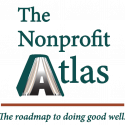Fundraising Strategies For A Volatile Market

In today’s unpredictable economic climate, nonprofits must adapt their fundraising strategies to ensure financial stability and continued impact. Here are several key approaches to consider:
1. Embrace Technology for Enhanced Engagement
Incorporating digital tools can significantly improve donor engagement and streamline operations. Utilizing social media platforms, email campaigns, and donor management systems allows nonprofits to reach a broader audience, personalize communication, and track donor behavior effectively. These technologies facilitate real-time engagement and provide valuable data insights, enabling organizations to tailor their strategies and build stronger relationships with supporters.
2. Diversify Revenue Streams
Relying on a single source of income can be risky, especially during economic downturns. Nonprofits should explore various funding avenues, such as individual donations, corporate partnerships, grants, and earned income strategies. By diversifying revenue streams, organizations can reduce dependency on any one source and create a more resilient financial foundation.
3. Build Strong Corporate Partnerships
Corporate partnerships can provide substantial financial support and resources. Identifying companies that align with your mission and values, and approaching them with mutually beneficial proposals, can lead to long-term collaborations. Corporate sponsorships, matching gift programs, and cause-related marketing are effective ways to engage businesses in your fundraising efforts.
4. Focus on Recurring Giving Programs
Establishing recurring donation programs offers a stable and predictable revenue stream for nonprofits. By creating visible and clear recurring giving options and emphasizing the long-term impact of these contributions, organizations can build donor loyalty and ensure sustained support.
5. Engage Younger Donors Through Digital Platforms
Younger generations, such as Millennials and Gen Z, are increasingly becoming a significant donor base. Leveraging social media influencers and digital channels can help nonprofits connect with these groups, raising awareness and driving donations. By meeting younger donors where they are and aligning with their values, organizations can cultivate long-term relationships and support.
6. Strengthen Donor Relationships Through Transparent Communication
Open and honest communication is vital in maintaining donor trust and engagement. Regular updates, personalized thank-you messages, and clear demonstrations of how donations are making an impact can reinforce the value of donors’ contributions. Transparency fosters a sense of partnership and encourages continued support.
By implementing these strategies, nonprofits can navigate the challenges of a volatile market and continue to fulfill their missions effectively. Adaptability, innovation, and a donor-centric approach are essential in building a resilient and sustainable fundraising framework.
Source: Forbes
The Nonprofit Atlas connects the dots for any “do-gooders” to do the most good. We provide the roadmap to doing good well. We simplify the work of securing resources, relationships, and best practices that fuel a mission and realize a vision. See us in action with a FREE 30-minute consultation.
